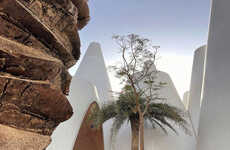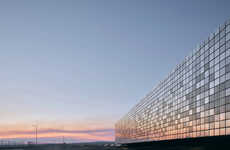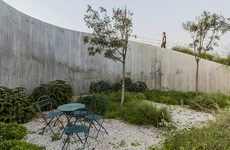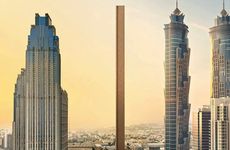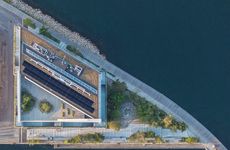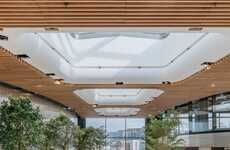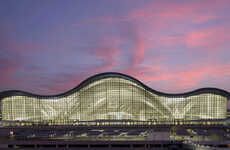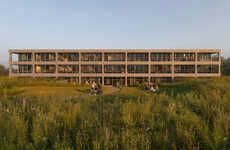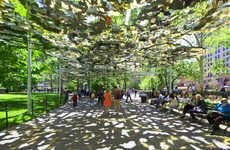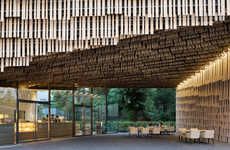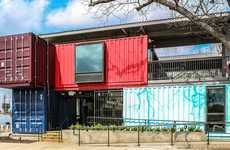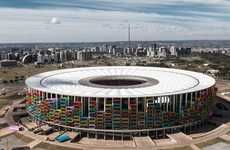
The Siemens Middle East Headquarters Feature a Sharp Facade
Jana Pijak — May 22, 2014 — Art & Design
References: sheppardrobson & frameweb
The Siemens Middle East Headquarters is located in Abu Dhabi’s Masdar City, a region that was planned by Foster and Partners and that is set to have 50,000 inhabitants by 2025.
This city will be the world's first zero-carbon community and this sustainable structure is one of its newest additions. A serrated facade adorns this linear structure that was designed by Sheppard Robson.
The sustainable building was realised with a cost of a conventional office and features an open-concept design that is column-free. The structure is devised into 32 separate offices that are equipped with shaded light-wells.
This efficient and budget-friendly architecture piece was created with local climate conditions in mind. The Siemens Middle East Headquarters optimizes daylight and its layered facade minimise's solar gain by creating shade for its inhabitants.
This city will be the world's first zero-carbon community and this sustainable structure is one of its newest additions. A serrated facade adorns this linear structure that was designed by Sheppard Robson.
The sustainable building was realised with a cost of a conventional office and features an open-concept design that is column-free. The structure is devised into 32 separate offices that are equipped with shaded light-wells.
This efficient and budget-friendly architecture piece was created with local climate conditions in mind. The Siemens Middle East Headquarters optimizes daylight and its layered facade minimise's solar gain by creating shade for its inhabitants.
Trend Themes
1. Sustainable Architecture - Opportunity for disruptive innovation in creating eco-friendly buildings that optimize daylight and minimize solar gain.
2. Open-concept Design - Opportunity for disruptive innovation in designing column-free office spaces that promote collaboration and flexibility.
3. Serrated Facades - Opportunity for disruptive innovation in using serrated facades to create unique and visually striking building designs.
Industry Implications
1. Architecture - Opportunity for disruptive innovation in sustainable building practices and designing open-concept office spaces.
2. Construction - Opportunity for disruptive innovation in implementing eco-friendly construction materials and techniques.
3. Urban Planning - Opportunity for disruptive innovation in designing sustainable communities with zero-carbon goals.
0.7
Score
Popularity
Activity
Freshness


